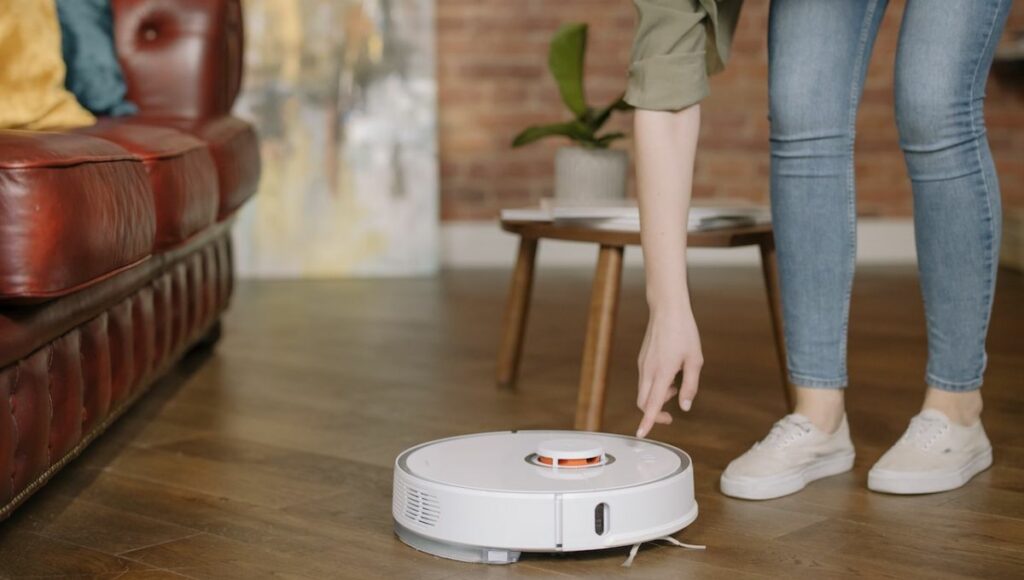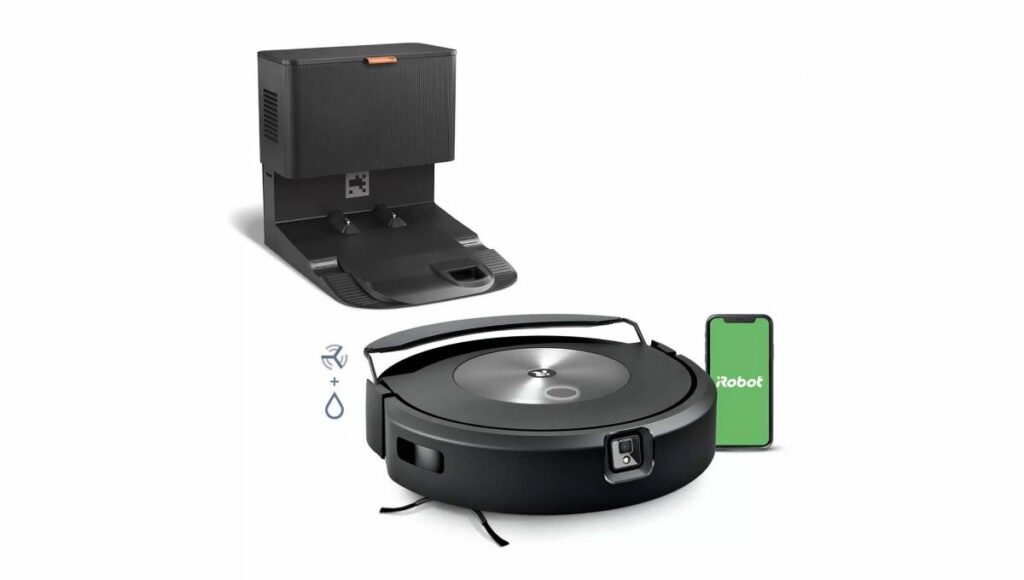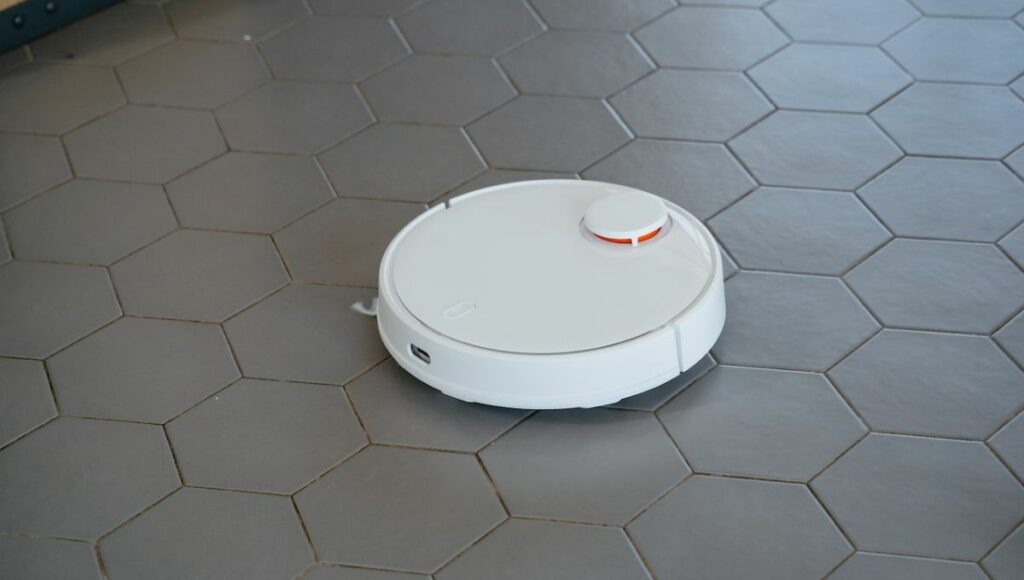Robot vacuums have become increasingly popular in recent years, offering convenience and ease of use for busy households. However, one of the most common concerns about these devices is whether they will fall down the stairs. While most robot vacuums have advanced sensors to prevent them from tumbling down the stairs, outdated models or improperly maintained sensors can increase the risk of accidents.
The sensors in robot vacuums have become more advanced over the years, making it highly unlikely for them to fall down stairs. However, it is still important to take precautions to prevent accidents. For example, if there are toys or other objects on the stairs, the robot vacuum may not be able to detect the drop-off and could fall. Additionally, if the sensors are dirty or damaged, they may not work correctly, increasing the risk of accidents.
This article will explore whether a robot vacuum will fall down the stairs. We will discuss the sensors used to prevent accidents and the factors that can increase the risk of falls. By understanding these factors, you can take steps to ensure the safe and effective use of your robot vacuum.
[lwptoc]
How robot vacuums navigate

Robot vacuums are designed to navigate and clean spaces autonomously, without human intervention. The technology that enables them to do this combines mapping, sensors, and programming. In this section, we’ll explore how robot vacuums navigate your house and what features to look for when choosing a robot vacuum.
Mapping technology
Mapping technology is the foundation of a robot vacuum’s navigation system. Most robot vacuums use a combination of infrared sensors and mapping algorithms to create a map of the space they are cleaning. The mapping algorithm uses the data from the sensors to create a virtual map of the room, which the robot vacuum uses to navigate and clean the area.
Sensors
Sensors are critical to a robot vacuum’s navigation system. They help the robot vacuum detect obstacles, map the space, and avoid falling down stairs or other obstacles. Some of the most important sensors in a robot vacuum include:
- Cliff sensors: These sensors measure the distance between the robot base and the floor, usually by bouncing infrared light off the floor. If there is a sudden increase in the distance to the floor, the robot is about to fall off a cliff or down the stairs. The robot vacuum will stop and reverse its direction to avoid falling.
- Drop sensors: These sensors detect the height of an obstacle, such as a step or a raised threshold. They work by emitting a beam of light and measuring the time it takes for the light to bounce back. If the beam of light does not bounce back within a specific time frame, the robot vacuum will assume there is an obstacle in its path and change direction.
Cleaning path
A robot vacuum’s cleaning path is determined by its programming. Most robot vacuums use a combination of random and systematic cleaning patterns to cover the entire space they are cleaning. Some robot vacuums use mapping technology to create a virtual space map and plan their cleaning path accordingly. Others use a more random pattern but are designed to clean the space multiple times to ensure that they cover every inch of the floor.
When choosing a robot vacuum, it’s important to consider the reliability of the navigation system, the battery life, and the size of the dustbin. A robot vacuum with a reliable navigation system will more efficiently and effectively clean your space. A longer battery life will allow the robot vacuum to clean for extended periods without recharging. And a larger dustbin will allow the robot vacuum to pick up more dirt and debris before needing to be emptied.
The navigation system is one of the most important features when choosing a robot vacuum. By understanding how robot vacuums navigate and what features to look for, you can choose a robot vacuum that will clean your space effectively and efficiently.
Can iRobot Roomba’s cliff sensors prevent a fall?

The smart Roomba vacuum cleaner, a product of iRobot, is designed with many advanced features to enhance the convenience of vacuuming around the house. Key among these is the Roomba’s sensors, particularly the cliff sensors, which help prevent a Roomba from falling down the stairs. These sensors emit infrared signals that the Roomba detects, effectively gauging if it’s at the edge of a staircase or a flat surface.
The Roomba’s cliff sensors recognize a significant drop in the distance the signals travel, indicating a ‘cliff’. When Roomba’s sensors pick up this difference, the device is programmed to stop, reverse, and redirect its path to avoid the tumble. However, issues can occur, making a Roomba fall downstairs. Some reasons for this could include dust covering the sensors or malfunctioning in the Roomba model itself.
Furthermore, the iRobot app allows users to set up virtual walls, an invisible barrier that Roomba models recognize and avoid. The virtual wall unit sends out infrared signals that the Roomba cliff sensors interpret as a physical barrier, effectively preventing the Roomba from falling over the edge. This virtual wall barrier iRobot designed is universally compatible with most of the latest models, including the ‘i series’, enhancing their ability to avoid falling.
Yet, the technology isn’t flawless. Roombas can sometimes misinterpret dark carpets as a fall down the stairs or have difficulties with wood floors. As such, users must check and clean the Roomba sensors regularly. A simple wipe with a dry cloth can suffice. Docking the vacuum on a whole house level, away from stairs, is also advisable as an added preventive measure.
The Roomba vacuum cleaner is a smarter robot than a traditional vacuum cleaner, minimizing the effort needed for routine cleanups. Its clever use of infrared sensors, cliff sensors, and virtual wall barriers ensures the device doesn’t end its cleaning spree by falling down the stairs.
Despite these intelligent measures, some owners report instances of a Roomba falling downstairs. This is usually due to dust accumulation on the sensors or dark carpets that may confuse the cliff sensor, mimicking a void. Therefore, cleaning the Roomba sensors regularly with a dry cloth is advisable, ensuring the device can detect dangers efficiently.
Can robot vacuums fall downstairs?
It’s highly unlikely. Almost all new robot vacuums have advanced sensors that prevent them from falling down the stairs. However, it is still important to understand the risks and limitations of these devices.
Safety features
Modern robot vacuums have advanced sensors that allow them to navigate obstacles and avoid falling off stairs. These sensors can detect changes in floor height, and they are designed to stop the vacuum from moving forward if it senses that it is about to fall off a ledge or down a flight of stairs.
Limitations
While robot vacuums are designed to be safe and reliable, they are not foolproof. Outdated models or poorly maintained devices may be more prone to falling down stairs or causing damage to your home. Regularly cleaning and maintaining your robot vacuum is important to ensure it operates at peak performance.
Carpeted stairs
Carpeted stairs can pose a particular challenge for robot vacuums. The sensors on these devices may have difficulty detecting changes in height on carpeted surfaces, which can increase the risk of the vacuum falling down the stairs. Choosing a robot vacuum with advanced sensors designed to work on carpeted surfaces is important if you have carpeted stairs.
While robot vacuums are generally safe and reliable, there is always a risk of them falling down the stairs or causing damage to your home. By choosing a modern device with advanced sensors and regularly maintaining your vacuum, you can minimize these risks and enjoy the convenience of a robot vacuum without worrying about safety concerns.

Preventing falls
One of the biggest concerns regarding robot vacuums is their ability to avoid falling down the stairs. Fortunately, there are several ways to prevent this from happening:
Physical barriers
Physical barriers are one of the simplest ways to prevent a robot vacuum from falling down the stairs. This can be as simple as using a baby gate or other barrier to block off the stairs. While effective, this method can be inconvenient and may not be the most aesthetically pleasing solution.
Virtual barriers
Another option is to use virtual barriers. Many robot vacuums come with virtual walls that can be set up to create a virtual wall barrier that the vacuum will not cross. This is an excellent option for those who want to prevent their robot vacuum from falling down the stairs without using physical barriers.
Drop sensors
Most robot vacuums come equipped with drop sensors that allow them to detect when they are approaching a ledge or drop-off. When the vacuum senses that it is approaching the edge of the stairs, it will stop and turn around to avoid falling.
Cameras
Some robot vacuums have cameras allowing the robots to see their surroundings and navigate accordingly. This can be especially helpful when avoiding falls down the stairs. However, robot vacuums with cameras are more expensive than those without.
In conclusion, there are several ways to prevent a robot vacuum from falling down the stairs. Whether you choose to use physical barriers, virtual wall barriers, drop sensors, or cameras, it is important to take steps to ensure that your robot vacuum stays safe and secure while in use.
Final thoughts
In conclusion, the answer to whether robot vacuums fall down the stairs is yes and no. While most robot vacuums come with cliff sensors that detect gaps and prevent them from falling, some models may not have these sensors or have faulty ones that can cause them to fall. Therefore, it is essential to check the sensors of your robot vacuum regularly and create barriers to stop it from falling.
Moreover, several factors determine your robot vacuum’s efficiency at navigating the stairs, from the device’s inbuilt technology to dirty sensors. Defective cliff sensors, loose carpets, and steep drops are reasons a robot vacuum may fall down the stairs. Therefore, keeping your stairs clean and free of obstacles is crucial to prevent your robot vacuum from falling.
In summary, while robot vacuums are designed to navigate around obstacles and clean your floors efficiently, they are not foolproof. They can fall down the stairs if the necessary precautions are not taken. By checking your robot vacuum’s sensors regularly, keeping your stairs clean and obstacle-free, and creating barriers to prevent falls, you can ensure that your robot vacuum operates safely and effectively.
